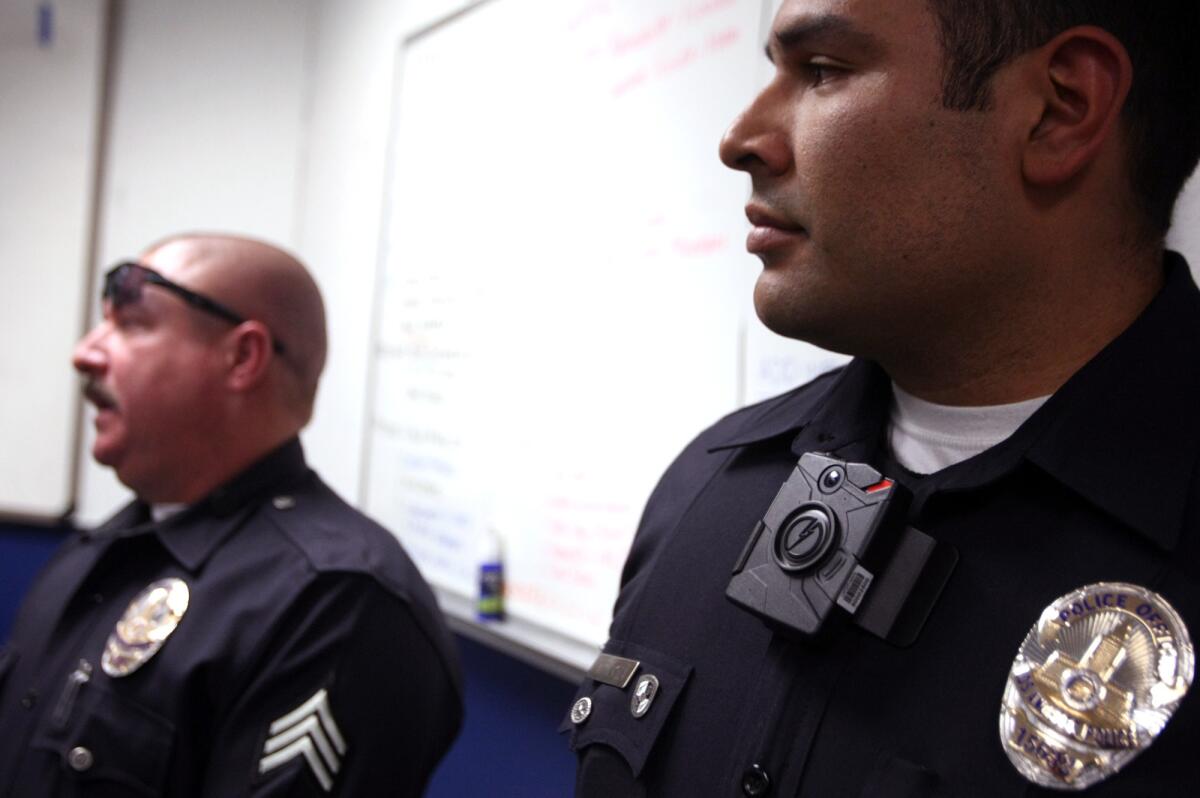LAPD moves one step closer to on-body cameras for officers

- Share via
After months of testing, Los Angeles police officials have picked the company they would like to use to outfit hundreds of officers with on-body cameras.
It remains unclear when officers will start to use the cameras -- no contract has been signed and the department has yet to draft a policy on the use of the equipment -- but the LAPD’s decision to use Taser International as its vendor marks the department’s latest move in its effort to utilize the new technology.
The LAPD’s chief information officer and a department technology expert informed the Police Commission of the decision Tuesday, calling Taser “absolutely the preferred vendor” of two companies whose products were tested.
The other company, Coban Technologies Inc., has been used previously to outfit LAPD patrol cars with in-car cameras.
Advocates say on-body cameras will be a valuable tool for the department. Having audio and video recordings of police encounters with the public, they say, could help guard against officer misconduct and clear cops who are falsely accused of wrongdoing. LAPD Chief Charlie Beck has said he sees the technology as “the future of policing.”
Officers spent 90 days testing camera equipment from both companies, while department officials gathered input from the inspector general, the American Civil Liberties Union and other law enforcement agencies that have implemented the technology, LAPD CIO Maggie Goodrich told the commission. The LAPD also posted a public survey online, which drew about 300 responses.
Sgt. Dan Gomez said the LAPD looked at factors such as camera battery life, video storage capabilities and how well the equipment captures video. One of the key differences between the models, he said, was that the Taser device recorded better in low-light conditions.
LAPD officials said they suggested making improvements to Taser’s product, such as eliminating the “wind noise” picked up in the background of the audio, Gomez said.
“It’s not an absolutely perfect solution or a silver bullet by all means. There are definitely areas of improvement,” Goodrich said. “But certainly they were the clear winner.”
When asked by the commission if the shortfalls would prohibit the effectiveness of the cameras, Gomez said he was confident that they would meet the department’s needs even if put on the street without improvements.
Taser provided two camera models to the LAPD: one that can be clipped to the side of an officer’s glasses or collar, and a second box-like device that can be pinned to an officer’s uniform in the center of the chest. Gomez said most of the officers who tested the devices preferred the chest model.
Goodrich said department officials would meet with the company this week to begin discussing its contract, then meet internally in the coming weeks to talk about what the on-body camera policy should include. She said the LAPD would meet with the ACLU again by the end of the year.
Funding for the cameras will come from more than $1 million raised through private donations, avoiding City Hall budget constraints and bureaucracy that have hampered efforts to install cameras in LAPD patrol cars.
Follow @katemather for more LAPD news.
More to Read
Sign up for Essential California
The most important California stories and recommendations in your inbox every morning.
You may occasionally receive promotional content from the Los Angeles Times.














